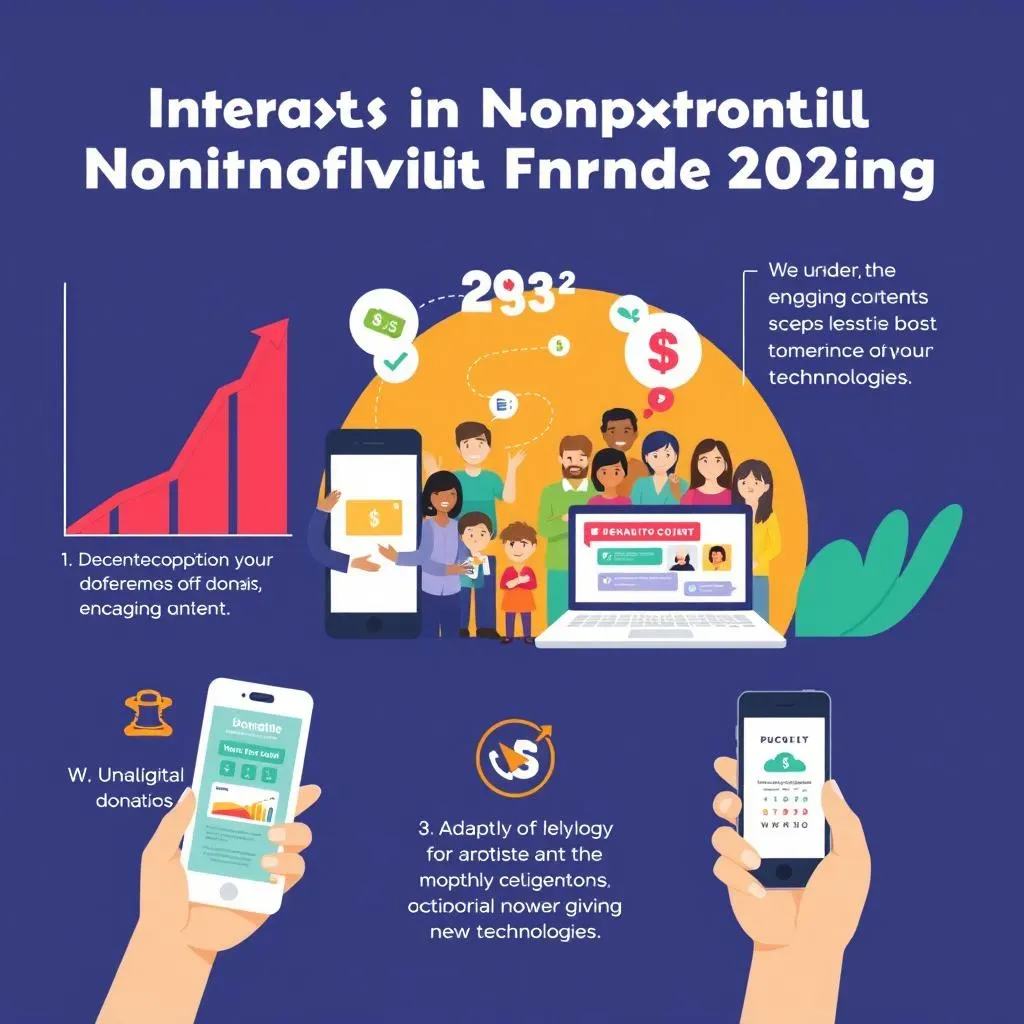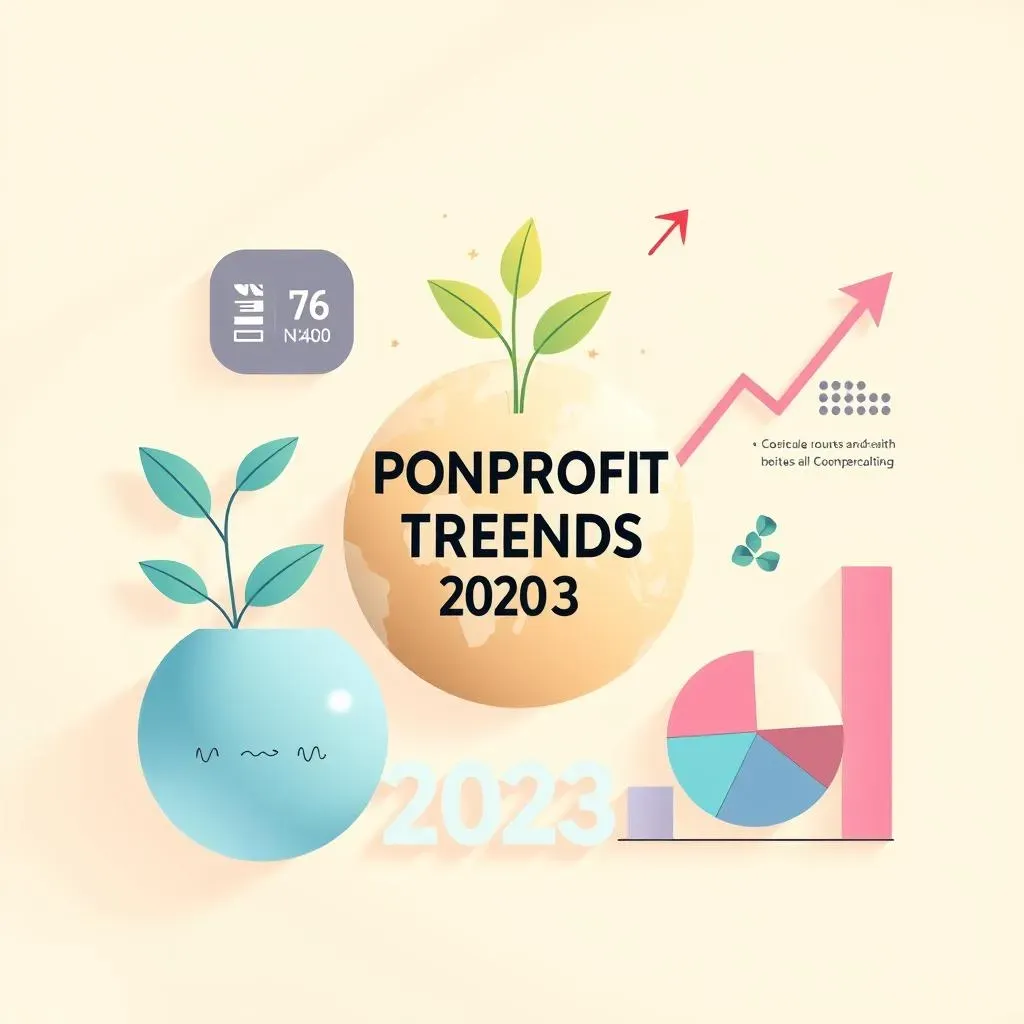Table of Contents
The world of non-profit fundraising is constantly evolving, and 2023 was no exception. This article explores the key "Non-profit fundraising trends in 2023," providing insights into the challenges and opportunities that shaped the landscape for charitable organizations. We'll examine the most significant trends that impacted fundraising strategies, from the persistent effects of inflation and the evolving donor landscape to the rise of digital giving and the emergence of artificial intelligence. We'll analyze both positive and negative shifts, offering practical advice and actionable strategies for navigating these changes. Prepare to gain a deeper understanding of the forces driving non-profit fundraising and discover how to adapt and thrive in this dynamic environment. By the end, you'll have a clear picture of the past year's fundraising trends and valuable tools to plan for future success. Let's dive in!
Top Nonprofit Fundraising Trends in 2023

Top Nonprofit Fundraising Trends in 2023
The Rise of Digital Fundraising
Hey friend, 2023 saw a massive surge in digital fundraising. Nonprofits that embraced online platforms, like those compared in our online platform comparison, saw impressive results. People are glued to their phones and computers, so it's a smart move to meet them where they are. Think engaging social media campaigns, easy-to-use donation buttons on your website, and even text-to-give options. It’s all about making giving as effortless as possible!
Remember that killer crowdfunding campaign we talked about? Check out our tips for successful crowdfunding to see how others have maximized this trend. The key is to build a strong online presence, create compelling content that resonates with your target audience, and make the donation process super smooth. Don't underestimate the power of storytelling to connect with potential donors online—show them the impact of their contributions!
Platform | Pros | Cons |
|---|---|---|
Large reach, built-in audience | Can be expensive to advertise | |
GoFundMe | Easy to set up, user-friendly | Higher fees than some platforms |
The Importance of Donor Relationships
It's not just about the money, you know. Building genuine relationships with donors is crucial. In 2023, nonprofits that focused on fostering strong connections with their supporters saw increased loyalty and donations. Think personalized thank-you notes, regular updates on your progress, and opportunities for donors to get involved beyond just writing a check. It's about making them feel valued and part of your mission. We've written about engaging donors effectively; it's a game-changer.
One of the best ways to nurture these relationships is through transparent communication. Share your successes, challenges, and future plans with your donors. Let them see firsthand the impact of their contributions. This builds trust and encourages continued support. Consider creating a newsletter, sending out regular email updates, or even hosting virtual events to connect with your supporters. The more they feel connected to your cause, the more likely they are to donate generously. And don't forget the power of a heartfelt, handwritten fundraising letter!
- Personalized thank-you notes
- Regular impact reports
- Volunteer opportunities
Challenges and Opportunities in Nonprofit Fundraising: 2023

Challenges and Opportunities in Nonprofit Fundraising: 2023
Economic Headwinds and Donor Behavior
So, 2023 wasn't exactly a walk in the park for nonprofits, right? Inflation hit everyone hard, and people understandably tightened their belts. This directly impacted charitable giving. Many donors had less disposable income, leading to decreased donations or a shift in giving priorities. We saw a drop in both the number of donors and the average donation amount. This isn't to say that people stopped caring, but their ability to give changed. It's crucial to understand these shifts in donor behavior and adapt your strategies accordingly. Check out our guide on nonprofit fundraising strategies for 2023 for some ideas.
One thing we saw a lot of was a focus on smaller, more frequent donations. People were still willing to give, but they needed more flexibility. Monthly giving programs became even more popular as a way for donors to support nonprofits consistently without a huge financial burden. This is a great opportunity for nonprofits to build stronger, long-term relationships with their supporters. It's also a chance to educate donors about the ongoing needs of your organization and the impact of consistent support. Also, remember those fundraising success stories? They show the power of resilience in tough times.
- Decreased donation amounts
- Shift to monthly giving
- Increased need for transparency
The Rise of Digital Competition
The digital world is a crowded place, and nonprofits are competing for attention alongside businesses and influencers. This means that your online presence needs to be top-notch. A poorly designed website, lackluster social media presence, or confusing donation process can quickly turn potential donors away. It’s not enough to just have a website—it needs to be user-friendly, engaging, and mobile-responsive. Think about it: people are more likely to donate if the process is quick and easy. Don't forget about our FAQs for quick answers to your fundraising questions.
To stand out in the digital noise, nonprofits need to create compelling content that resonates with their target audience. This means sharing impactful stories, highlighting the work you're doing, and showcasing the difference you're making in the world. Invest in high-quality photos and videos, and use data-driven insights to inform your content strategy. Remember, your digital presence is often the first impression a potential donor has of your organization. Make it count! And, for some inspiration, check out virtual fundraising ideas.
Challenge | Opportunity |
|---|---|
Increased digital competition | Reach a wider audience |
Need for engaging content | Build stronger brand awareness |
Adapting to Changing Donor Demographics
The demographics of donors are constantly shifting. Younger generations, for example, often prefer to give online and through platforms that align with their values. This means that nonprofits need to be adaptable and willing to try new approaches to reach these audiences. This includes using platforms that are popular with younger people, like TikTok and Instagram, and creating campaigns that speak to their concerns and passions. Don't be afraid to experiment with different strategies and find what works best for your organization. We've got some great tips on fundraising ideas for small non-profits, too.
It’s also important to remember that not all donors are created equal. Different demographics have different giving patterns and preferences. By understanding these differences, nonprofits can tailor their fundraising strategies to resonate with specific groups. This might involve using different communication channels, crafting personalized messages, or offering various giving options. It’s all about meeting donors where they are and showing them that you value their support. Remember to stay compliant with all regulations; fundraising compliance in the US is crucial!
Navigating the Future of Nonprofit Fundraising: Trends Beyond 2023

Navigating the Future of Nonprofit Fundraising: Trends Beyond 2023
Embracing AI and Automation
Hey there, the use of Artificial Intelligence (AI) and automation in fundraising is only going to grow. Think smart tools that help you personalize communications, predict donor behavior, and automate repetitive tasks. This frees up your team to focus on building relationships and creating engaging content. We've seen some early adopters already seeing impressive results. This isn't about robots taking over; it's about using technology to enhance your human touch and boost efficiency. Imagine AI helping you segment your donor base for more effective outreach or automatically sending personalized thank-you notes. Pretty cool, right?
But remember, AI is a tool; it's not a magic bullet. You still need a human element to your fundraising efforts. The best approach combines the power of AI with the empathy and understanding that only humans can provide. It’s about finding the right balance and using technology to enhance, not replace, your team’s skills. We’ve got some great fundraising strategies that incorporate technology seamlessly.
AI Application | Benefits | Considerations |
|---|---|---|
Donor segmentation | Targeted outreach, increased engagement | Data privacy, ethical implications |
Automated email marketing | Improved efficiency, consistent communication | Personalization, avoiding spam filters |
The Importance of Storytelling and Impact
People don't just donate to organizations; they donate to causes they believe in. In the years to come, nonprofits that effectively tell their stories and demonstrate the impact of their work will be the most successful. This involves creating compelling narratives that connect with donors on an emotional level, showcasing the real-life impact of their contributions. Think powerful visuals, compelling testimonials, and data that quantifies your success. It’s about showing, not just telling.
This means investing in high-quality storytelling tools and techniques. This could involve professional photography and videography, creating engaging social media content, or developing a strong website with compelling case studies. It's about finding creative ways to share your organization's mission and the difference you're making in the world. Consider creating short videos that highlight individual success stories or using data visualization to showcase the impact of your programs. Remember those success stories we talked about earlier? They're perfect examples of impactful storytelling.
- Invest in high-quality visuals
- Share compelling testimonials
- Use data to showcase impact
Diversifying Fundraising Strategies
Don't put all your eggs in one basket! In the future, nonprofits will need to diversify their fundraising strategies to reduce reliance on any single source of income. This could involve exploring new revenue streams, such as corporate partnerships, foundation grants, or even social enterprise initiatives. It's about creating a more resilient and sustainable funding model that's less vulnerable to economic downturns or changes in donor behavior.
This also means staying ahead of the curve and adapting to emerging trends. Keep an eye on new technologies, innovative fundraising approaches, and shifting donor preferences. Be open to experimenting with different strategies and finding what works best for your organization. Remember that FAQ page we built? It’s a great example of a diversified approach to providing information.
